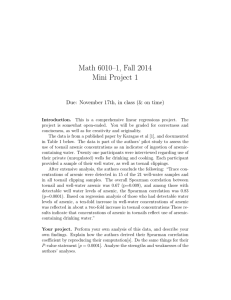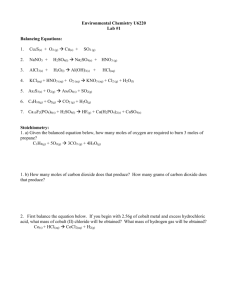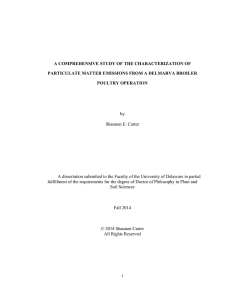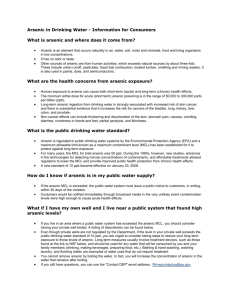Click here - The Gibson Group
advertisement
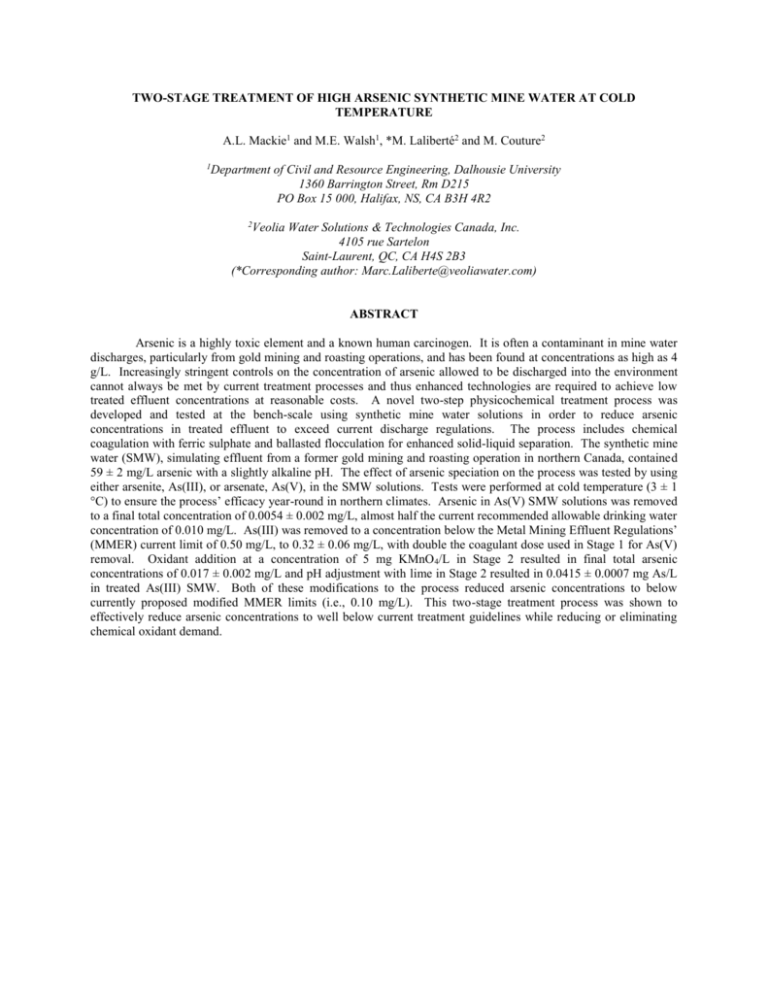
TWO-STAGE TREATMENT OF HIGH ARSENIC SYNTHETIC MINE WATER AT COLD TEMPERATURE A.L. Mackie1 and M.E. Walsh1, *M. Laliberté2 and M. Couture2 1 Department of Civil and Resource Engineering, Dalhousie University 1360 Barrington Street, Rm D215 PO Box 15 000, Halifax, NS, CA B3H 4R2 2 Veolia Water Solutions & Technologies Canada, Inc. 4105 rue Sartelon Saint-Laurent, QC, CA H4S 2B3 (*Corresponding author: Marc.Laliberte@veoliawater.com) ABSTRACT Arsenic is a highly toxic element and a known human carcinogen. It is often a contaminant in mine water discharges, particularly from gold mining and roasting operations, and has been found at concentrations as high as 4 g/L. Increasingly stringent controls on the concentration of arsenic allowed to be discharged into the environment cannot always be met by current treatment processes and thus enhanced technologies are required to achieve low treated effluent concentrations at reasonable costs. A novel two-step physicochemical treatment process was developed and tested at the bench-scale using synthetic mine water solutions in order to reduce arsenic concentrations in treated effluent to exceed current discharge regulations. The process includes chemical coagulation with ferric sulphate and ballasted flocculation for enhanced solid-liquid separation. The synthetic mine water (SMW), simulating effluent from a former gold mining and roasting operation in northern Canada, contained 59 ± 2 mg/L arsenic with a slightly alkaline pH. The effect of arsenic speciation on the process was tested by using either arsenite, As(III), or arsenate, As(V), in the SMW solutions. Tests were performed at cold temperature (3 ± 1 °C) to ensure the process’ efficacy year-round in northern climates. Arsenic in As(V) SMW solutions was removed to a final total concentration of 0.0054 ± 0.002 mg/L, almost half the current recommended allowable drinking water concentration of 0.010 mg/L. As(III) was removed to a concentration below the Metal Mining Effluent Regulations’ (MMER) current limit of 0.50 mg/L, to 0.32 ± 0.06 mg/L, with double the coagulant dose used in Stage 1 for As(V) removal. Oxidant addition at a concentration of 5 mg KMnO 4/L in Stage 2 resulted in final total arsenic concentrations of 0.017 ± 0.002 mg/L and pH adjustment with lime in Stage 2 resulted in 0.0415 ± 0.0007 mg As/L in treated As(III) SMW. Both of these modifications to the process reduced arsenic concentrations to below currently proposed modified MMER limits (i.e., 0.10 mg/L). This two-stage treatment process was shown to effectively reduce arsenic concentrations to well below current treatment guidelines while reducing or eliminating chemical oxidant demand.





